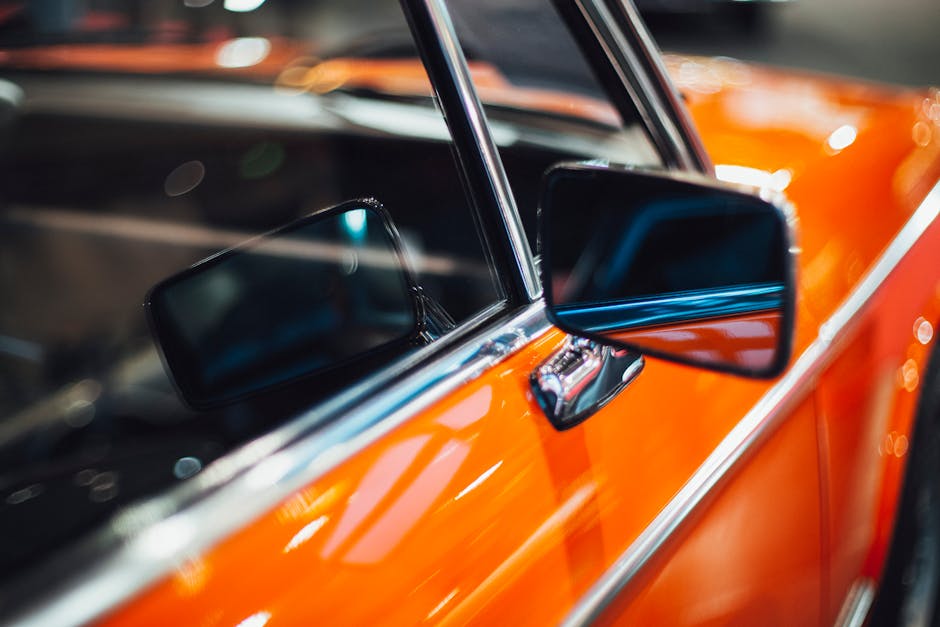Ensuring Compatibility: Matching Retro Parts with Your Vintage Vehicle

Maintaining the charm and functionality of a vintage vehicle often involves sourcing retro parts that match the car's original specifications. Ensuring these parts are compatible can be a meticulous process, requiring a keen understanding of the vehicle's history, specifications, and the intricacies of automotive engineering. This article provides a comprehensive guide to help vintage car enthusiasts navigate the complexities of matching retro parts with their beloved vehicles.
Understanding Your Vehicle's Specifications
Before diving into the search for retro parts, it is essential to have a thorough understanding of your vehicle’s specifications. This includes knowing the make, model, year, and specific trim level. Many vintage vehicles have undergone modifications over the years, making it crucial to verify the current state of your car compared to its original configuration.
Consulting the vehicle’s manual is a good starting point. These manuals often provide detailed information on parts and their specifications. If you don’t have the original manual, resources like Haynes Manuals can be invaluable. Additionally, online forums and clubs dedicated to specific car brands can offer insights and advice from fellow enthusiasts.
A critical part of this process involves documenting all current modifications and ensuring any new parts match these changes. Even small deviations in part specifications can lead to compatibility issues.
Sourcing Retro Parts
Finding retro parts for vintage vehicles can be challenging but rewarding. There are several avenues to explore:
- Online Marketplaces: Websites like eBay and Classic Parts offer a wide range of vintage car parts.
- Specialty Stores: Brick-and-mortar stores that specialize in vintage vehicles often carry rare and hard-to-find parts.
- Car Shows and Swap Meets: These events are great places to find parts and connect with other enthusiasts who might have the parts you need.
- Salvage Yards: While it might take some digging, salvage yards can be treasure troves for vintage car parts at reasonable prices.
When purchasing parts, ensure they come with a return policy or some form of guarantee. This is crucial if you discover that the part is not compatible after purchase.
Verifying Compatibility
The key to ensuring compatibility lies in meticulous verification. Here are some steps to follow:
- Compare Part Numbers: Cross-reference part numbers from your vehicle’s manual or existing components with those of potential replacements.
- Check Measurements: Ensure that dimensions such as length, width, and mounting points match precisely.
- Material Quality: Verify that the materials used in the retro part meet or exceed the original specifications.
- Consult Experts: When in doubt, seek advice from automotive engineers or mechanics who specialize in vintage vehicles.
Installation Tips
The installation of retro parts requires precision and care. Here are some tips to ensure a smooth process:
Prepare Your Work Area:
- Ensure your workspace is clean and organized to avoid losing small components.
- Gather all necessary tools before beginning the installation process.
Follow Manufacturer Instructions:
- If available, always refer to the installation instructions provided by the part manufacturer.
- If instructions are not available, consult your vehicle’s manual or seek advice from experienced mechanics.
Avoid Common Mistakes:
- Avoid forcing parts into place; this can lead to damage.
- Tighten bolts and screws incrementally to ensure even pressure distribution.
The Role of Modern Technology
The advent of modern technology has significantly eased the process of finding and verifying retro parts for vintage vehicles. Online databases and software tools can cross-reference part numbers and specifications efficiently. 3D printing technology also offers possibilities for recreating rare or obsolete components with high precision.
| Technology | Benefit | Example |
|---|---|---|
| Online Databases | Easier cross-referencing of part numbers and specifications | Parts Catalogs Online |
| 3D Printing | Recreating rare or obsolete components with high precision | Shapeways |
| Software Tools | Efficient verification of part compatibility | AutoDesk Software |
The Importance of Documentation
Keeping detailed records of all installed parts is essential for future maintenance and repairs. This documentation should include part numbers, purchase receipts, installation dates, and any relevant notes about modifications or adjustments made during installation.
An organized approach can save time and prevent errors when sourcing future replacement parts or when selling the vehicle. Digital tools like spreadsheets or specialized software can help keep these records up-to-date and easily accessible.
Caring for a vintage vehicle is more than just a hobby; it's an ongoing commitment to preserving automotive history. By understanding your vehicle's specifications, sourcing compatible retro parts carefully, verifying each component's compatibility, leveraging modern technology, and maintaining thorough documentation, you can keep your classic car running smoothly for years to come.